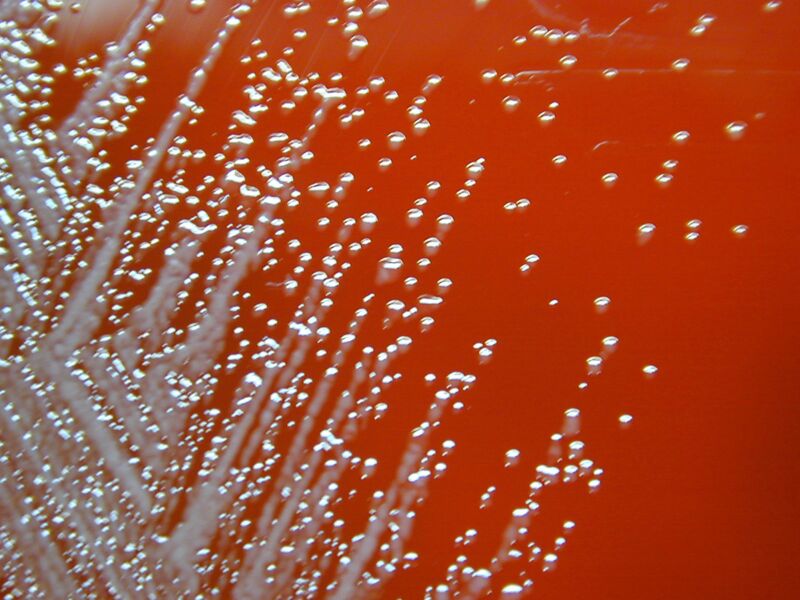
A fourth person in a fourth US state has mysteriously contracted a deadly South Asian bacterium without leaving the continental US, the Centers for Disease Control and Prevention reported Monday.
Two of the four cases have been fatal, including the latest one identified in Georgia late last month during a post-mortem exam.
CDC investigators determined that all four cases are connected and they suspect a so-far-unknown imported product may be to blame. The CDC had previously released an advisory on June 30 about the three earlier cases.
The first case was identified in an adult in Kansas in March, which was also fatal. In May, investigators identified a case in a 4-year-old Texas girl and another case in an adult in Minnesota. Both of those patients were hospitalized for extended periods before being released to transitional care facilities. The young girl in Texas reportedly suffered brain damage from the infection.
Once again, the CDC is warning healthcare providers to be on the lookout for the rare and often difficult-to-diagnose infection, called melioidosis—even in people who haven’t traveled. Meanwhile, the investigation continues into the source of the infecting bacteria, Burkholderia pseudomallei.
According to the CDC, whole genome sequencing conducted by the agency found the B. pseudomallei strains in each of the four cases closely matched each other. The strains link back to those found in Asia, particularly South Asia.
B. pseudomallei is an environmental bacterium that lives in soil and water in tropical and subtropical climates. In the US, it’s most often spotted in people who have recently traveled to places where the bacteria are endemic. However, It has also shown up unexpectedly in the US before in people with no recent travel history. Past mysterious cases have led researchers to speculate that B. pseudomallei may now be lurking in soils and waters in some areas of the US.
But, in the current cluster of cases, CDC investigators say the strains are most closely related to those from South Asia, and not any strains previously identified in North America.
Curious cluster
“Currently, CDC believes the most likely cause is an imported product (such as a food or drink, personal care or cleaning products or medicine) or an ingredient in one of those types of products,” the agency said in a statement. “The bacteria normally lives in moist soil and water. However, in rare cases, it has also been found to contaminate wet or moist products in the areas where the bacteria are common.”
So far, the CDC has collected and tested more than 100 samples of products, soil, and water from the four patient’s homes, but none have turned up positive for B. pseudomallei. The agency noted that tracking down a source of B. pseudomallei can sometimes be difficult as the bacteria can take two to three weeks to develop into an infection, broadening the window of possible exposure times and testing patients’ memories.
Once melioidosis takes hold, diagnosing it can be another challenging process. Melioidosis has been called the “Great Mimicker” because its symptoms can vary greatly and be vague. It’s sometimes mistaken for other serious illnesses, such as tuberculosis.
People can become infected by ingesting the bacteria or having contact with a break in the skin. Clinical laboratory workers are also at risk of becoming infected through aerosolized particles. Symptoms can span localized pain or swelling, fever, ulceration, abscess, cough, chest pain, high fever, headache, anorexia, respiratory distress, abdominal discomfort, joint pain, disorientation, weight loss, stomach or chest pain, muscle or joint pain, and seizures, the CDC notes.
In the four linked cases, the patients presented with a range of symptoms from cough and shortness of breath to weakness, fatigue, nausea, vomiting, intermittent fever, and rash on the trunk, abdomen, and face.
The fatality rate of melioidosis ranges from 10 percent to 50 percent, and people with diabetes, kidney disease, chronic lung disease, and excessive alcohol use are most at risk. The risks can go up further if there’s a delay in diagnoses. B. pseudomallei is inherently resistant to many antibiotic treatments. Delayed diagnosis and treatment with the wrong drugs could allow the infection to spread unchecked. If it becomes systemic, it can be fatal in 90 percent of cases.